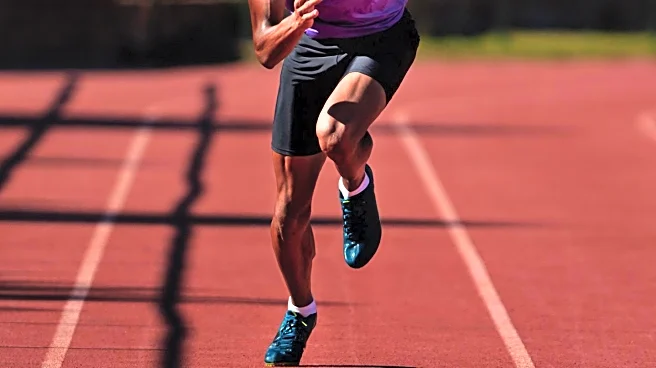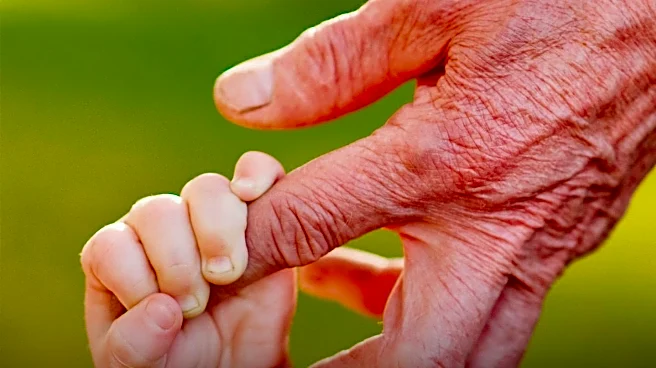Rapid Read • 8 min read
Researchers from the University of Utah, New York University, and Stanford University have identified gait retraining as a promising alternative for managing osteoarthritis pain. In a year-long randomized controlled trial, participants who adjusted their foot angle while walking experienced pain relief comparable to medication and showed slower cartilage deterioration in their knees. This study, published in The Lancet Rheumatology, is the first placebo-controlled trial to demonstrate the effectiveness of a biomechanical intervention for osteoarthritis. The research focused on patients with mild-to-moderate osteoarthritis in the medial compartment of the knee, which is the most common type. The study used a personalized approach to determine the optimal foot angle for each participant, which helped reduce knee stress and improve pain outcomes.
AD
This development is significant as it offers a non-invasive alternative to traditional pain management methods for osteoarthritis, which typically involve medication or surgery. With osteoarthritis being a leading cause of disability among adults over 40, gait retraining could provide a long-term solution for pain management, potentially delaying the need for joint replacement surgery. The study's findings could influence future treatment protocols and reduce reliance on pain medications, which often come with side effects. This approach also highlights the importance of personalized medicine, as tailoring the intervention to individual needs proved more effective than a one-size-fits-all method.
Before gait retraining can be widely implemented, the process needs to be streamlined for clinical use. The current method involves expensive and time-consuming motion-capture technology to determine the appropriate foot angle. Researchers are exploring the use of mobile sensors, such as smartphone video and 'smart shoes,' to make the intervention more accessible. Further studies are required to validate this approach and facilitate its integration into physical therapy practices. If successful, gait retraining could become a standard recommendation for osteoarthritis patients, offering a sustainable and drug-free pain management option.
The study underscores the potential of biomechanical interventions in treating chronic conditions like osteoarthritis. It also raises questions about the broader application of personalized medicine in other areas of healthcare. As technology advances, similar approaches could be developed for other musculoskeletal disorders, potentially transforming how these conditions are managed. Additionally, the study highlights the role of interdisciplinary collaboration in medical research, combining expertise from engineering, medicine, and biomechanics to address complex health issues.
AD
More Stories You Might Enjoy










